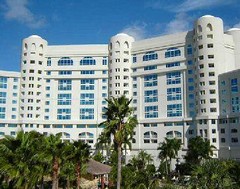 Florida has the third-most-profitable lottery and the third-most-active pari-mutuel enterprise in the United States. The pari-mutuel industry features horse racing, dog racing, and jai alai games. The state has had a long history with underground gambling and with elements of organized crime that ran gambling operations throughout the country and in many other places as well.
Florida has the third-most-profitable lottery and the third-most-active pari-mutuel enterprise in the United States. The pari-mutuel industry features horse racing, dog racing, and jai alai games. The state has had a long history with underground gambling and with elements of organized crime that ran gambling operations throughout the country and in many other places as well.
Miami had been designated in the 1930s as an “open city” by the Mob. That meant all organized crime families were welcome to live in Miami and to conduct their business operations, whether they involved sex, drugs, or gambling. During the 1940s, illegal casinos flourished in the southern part of Florida. Meyer Lansky made Miami Beach his headquarters for much of his adult life.
From there he guided his activities in Cuba, the Caribbean, and Las Vegas. In 1970, he actually initiated a campaign to legalize casinos in Miami Beach. His contrived arrest on a meaningless drug charge was timed, however, for just before Election Day. The passage failed by a large margin even though some polls showed it ahead a few weeks before the election.
The presence of organized crime figures in Florida also contributed to the defeat of a campaign for casinos in 1978. Before Atlantic City opened its casinos, Floridians initiated a ballot proposition for gambling. Although polls showed this proposition with a chance to pass, an active campaign against the casinos led by Governor Reuben Askew caused a major defeat of casinos by a 73 percent to 27 percent margin. In 1986 another vote defeated casinos by a 67 percent to 33 percent margin. In the same election the voters approved a lottery for Florida. Casino forces, this time linked to Las Vegas gambling entrepreneurs, tried again in 1994. They spent over $17 million in their campaign, the most money spent on any ballot proposition in U.S. history up to that date. It was expensive, but again they oversold their product, and the measure went down to defeat with less than 40 percent of the voters favoring casinos. Efforts continued through the rest of the decade to get machine gaming at tracks or other forms of casino gambling into Florida.
The Florida lottery was very successful from its inception. So were the bingo games at the halls of the Native Americans in Florida. It was the Seminoles who generated the initial federal lawsuit over Native gambling. The Seminoles’ first facility was in Hollywood, just north of Miami. They built a second hall in Tampa when the city gave them lands, supposedly for the purpose of having a Native American museum. After the land was put into trust status for the tribe, the Seminoles initiated gambling at the site. A third Seminole gambling hall is in Okechobee. The Miccosukee Tribe developed a gambling hall on the Tamiami Trail west of Miami. The tribes installed various video gambling devices in their halls under the pretense that they were lottery devices. The courts have not agreed. The tribe never won an order forcing the state to negotiate a casino agreement. Nonetheless, the gambling halls each have from 200 to 600 machines, as well as dozens of table games, in addition to their legal bingo games.
|
|